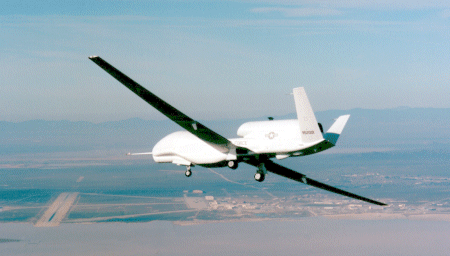Guy Norris/LOS ANGELES

Northrop Grumman says the crash on 29 March of a Ryan Aeronautical RQ-4A Global Hawk unmanned air vehicle (UAV) was caused by an abort signal from another remotely operated vehicle which was being tested more than 250km (140nm) away. The signal accidentally triggered the Ryan UAV's flight termination system.
"We had problems associated with a flight termination signal and frequency management," says Northrop Grumman Ryan Aeronautical Systems Global Hawk programme manager Bob Ettinger. "Someone else was testing their flight termination signal and we were high enough that we received their signal," he says. The UAV was operating around 75km from its Edwards AFB launch site in California and is believed to have received the erroneous termination signal from the source.
Transmission of the termination signal coincided with a banking manoeuvre by the RQ-4A. The movement temporarily caused the UAV to lose a crucial carrier signal that prevents the termination system from becoming activated.
This is one of three tones: the first is a constant monitor tone which, if dropped, will cause the UAV to return automatically to land. The second tone arms the flight termination system, which is then prevented from activating by the third signal.
• Two Global Hawks are continuing test flights and more are to join the programme soon.
The longest single flight recorded is 27.2h and the highest altitude 66,000ft (20,000m).
Northrop Grumman plans to base a UAV at Eglin AFB, Florida, next May for a return non-stop flight to the Mediterranean. An aircraft is also expected to be sent to Australia on a one-way flight to participate in exercises during March 2001.
Source: Flight International























